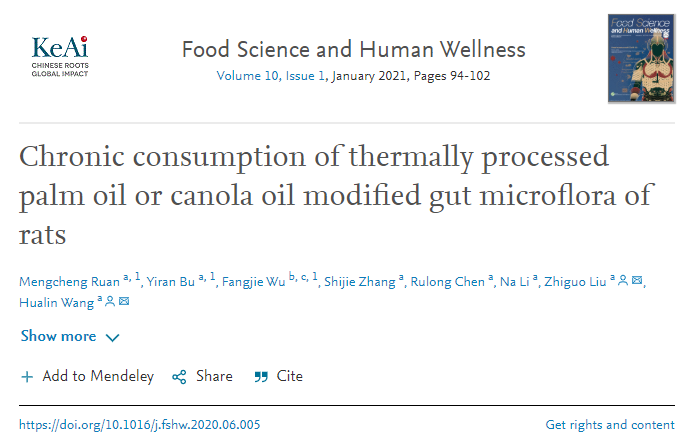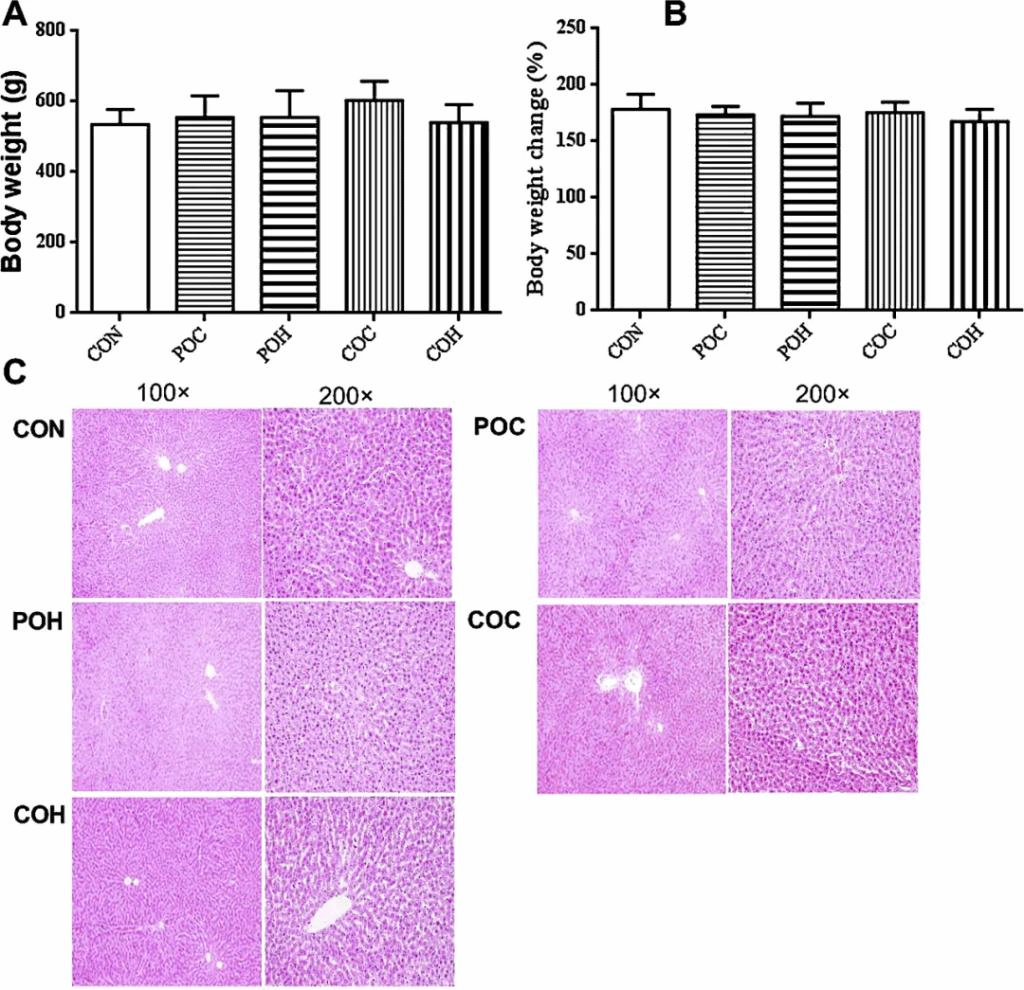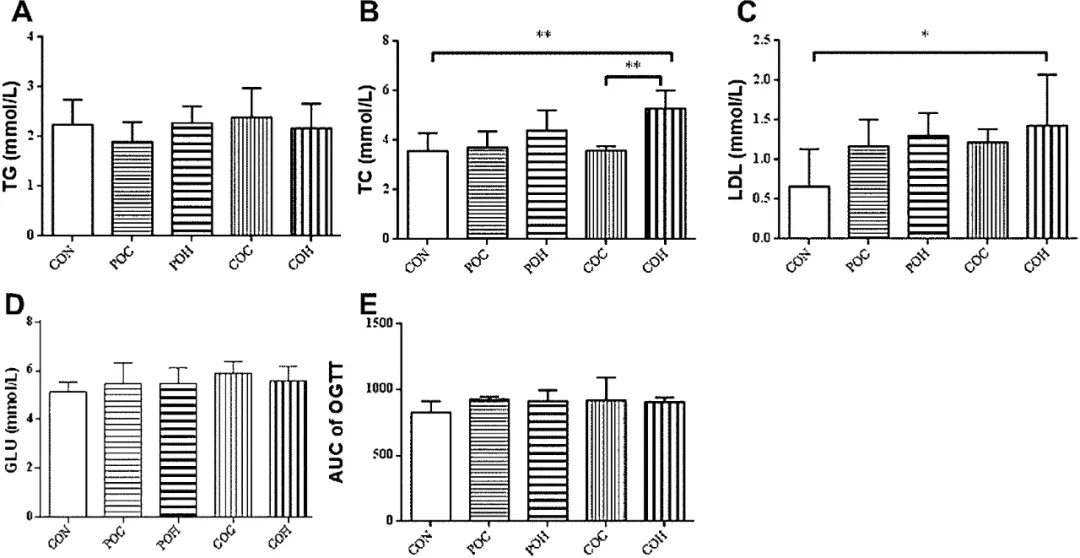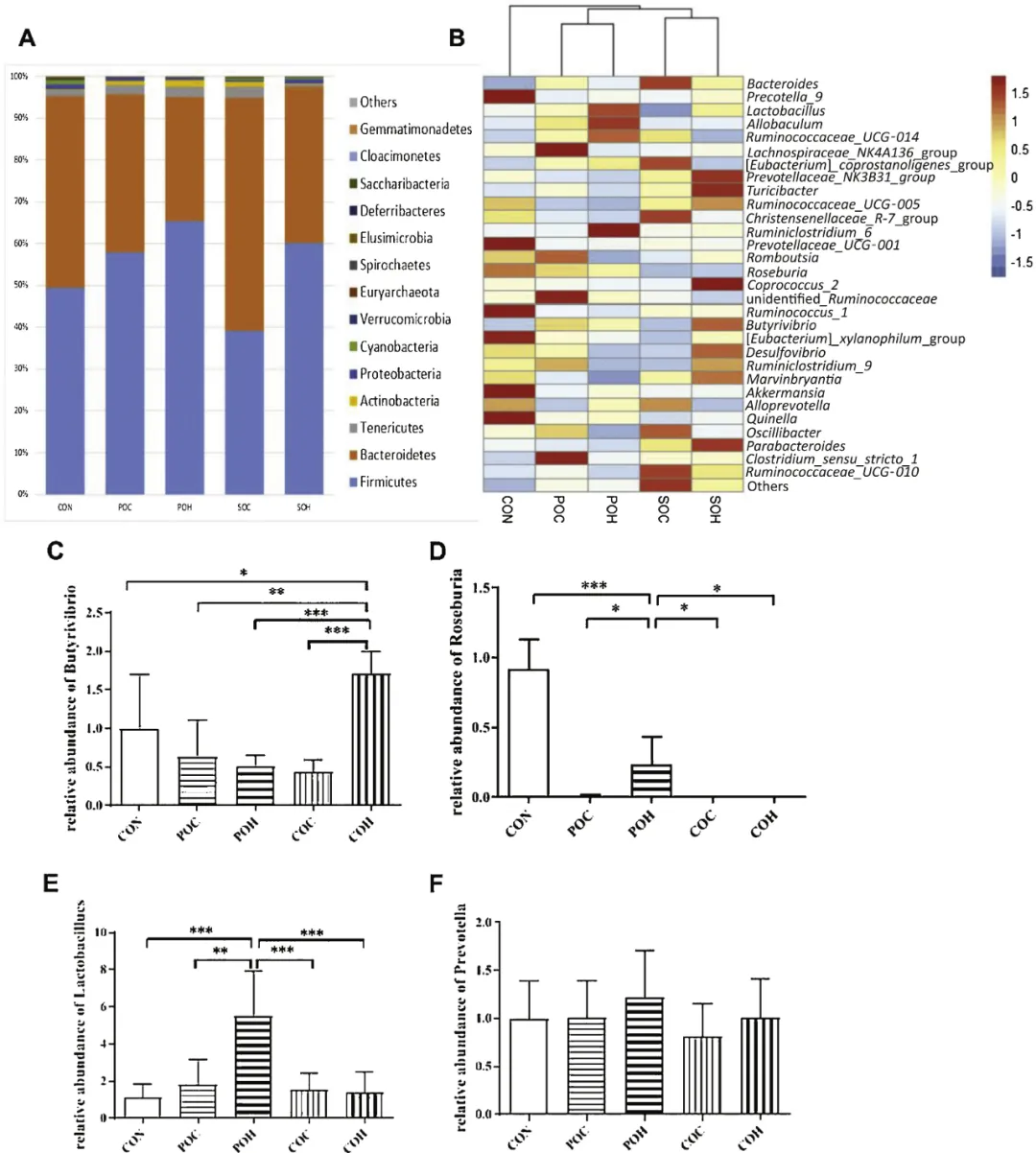
脂肪在烹饪中应用广泛,尤其是在油炸中。油炸是将食物在油中以150 ℃以上的高温加热,降低油中不饱和脂肪酸的含量,增加游离脂肪酸、极性物质和聚合物的过程。因此,棕榈油因其饱和脂肪酸(SFA)含量高而被认为适合油炸,在世界食品加工业中应用最为广泛。然而,饮食指南建议限制饱和脂肪的摄取量,以不饱和脂肪取代,以减少心血管疾病和糖尿病等代谢性疾病的风险。事实上,低芥酸的芥花油富含ω-9单不饱和脂肪酸(MUFA),对心血管疾病和糖尿病有益。然而,不饱和脂肪酸含有碳-碳双键,在高温烹调方法(如油炸)中易被氧化。在高温油炸中用芥花油代替棕榈油是否健康,尤其是对肠道微生物群的影响鲜有研究。在本研究中,武汉轻工大学的Mengcheng Ruan、Yiran Bu、Zhiguo Liu、Hualin Wang等旨在探讨与棕榈油相比,热氧化芥花油对肠道微生物群的影响。
肠道微生物群在葡萄糖和脂类代谢中发挥重要作用。此外,肠道微生物群会改变宿主的免疫系统,造成一系列免疫相关疾病,如炎症性肠病、非酒精性脂肪性肝炎,甚至神经系统疾病。肠道微生物群的组成受到宿主和饮食的双重改变。膳食脂肪对肠道微生物群有重要影响,许多研究表明,高脂肪摄入诱导了肠道微生物群在门和属水平上的变化,同时肠道微生物群的变化导致高脂肪饮食诱导肥胖和代谢紊乱。不同的食用油对肠道微生物群的组成有不同的影响:多不饱和脂类被称为益生元,饱和脂类或单不饱和脂类对肠道微生物群的影响比较复杂。在特定的无病原体(SPF)小鼠模型中,高棕榈油饮食喂养提升了梭状芽孢杆菌属的相对丰度,并抑制了拟杆菌属。另一项研究发现,食用棕榈油刺激了脱硫弧菌科的增殖,并降低了理研菌科的相对丰度。然而,热氧化棕榈油对肠道微生物群的影响仍然未知。一项临床研究说明,富含芥花油的饮食与超重者的链球菌、Tepidimicrobium、Robinsoniella和Turicibacter的相对丰度较高相关;与肥胖者的Parabacteroides、普雷沃氏菌属、Flexithrix、Fusibacter、肠杆菌和厚壁菌的相对丰度有关。另有研究表明,非加热芥花油喂养可增加乳酸菌的相对丰度,油炸芥花油可抑制大鼠普雷沃氏菌的增殖。本研究比较了新鲜或加热芥花油和棕榈油喂养大鼠3个月后的肠道微生物群,揭示了高温加热对膳食脂肪的影响。
棕榈油富含SFA和MUFA,但缺乏多不饱和脂肪酸(PUFA),芥花油富含单不饱和油酸,且含有不到1%的芥酸。此外,加热过程略微降低了棕榈油和芥花油中PUFA的含量,增加了SFA。
饲喂3个月后,与对照(CON)组相比,4个高脂饮食组(非加热棕榈油(POC)、加热棕榈油(POH)、非加热芥花油(COC)加热芥花油(COH))均未出现肥胖现象(图1A,1B)。此外,肝组织学染色表明,高脂饮食并没有引起肝脏异位脂质蓄积(图1C)。

A.体质量;B.体质量变化;C.肝脏组织学。
图1 高脂饮食饲喂对大鼠的影响

A.总胆固醇(TG);B. TC;C. LDL-c;D.葡萄糖耐量试验曲线下面积。
图2 高脂饮食饲喂对大鼠血浆脂质的影响

A.门水平菌群热图;B.属水平菌群热图;C.丁酸弧菌属;D.乳酸菌属;E.罗氏菌属;F.普雷沃氏菌属。
图3 高脂饮食对大鼠肠道菌群的影响

A.乙酸盐;B.丙酸盐;C.丁酸盐。
图4 热氧化油对粪便SCFA的影响
Conclusion
Chronic consumption of thermally processed palm oil or canola oil modified gut microflora of rats
Mengcheng Ruana,1, Yiran Bua,1, Fangjie Wub,c,1, Shijie Zhanga, Rulong Chena, Na Lia, Zhiguo Liua,*, Hualin Wanga,*
a School of Biology and Pharmaceutical Engineering, Wuhan Polytechnic University, Wuhan, Hubei, 430023, China
b Hubei Provincial Key Laboratory for Applied Toxicology, Hubei Provincial Academy of Preventive Medicine, Wuhan 430079, China
c Hubei Research Centre for Laboratory Animal, Wuhan 430079, China
1 Those authors contributed equally to this work.
Abstract
Dietary oils have critical influences on human health, and thermally cooking or frying modify the components and nutritional functions of oils. Palm oil was the most widely used oil in food processing industry, but its health effects remain debatable. In the current study, we aimed to compare the effects of thermally oxidized palm oil and canola oil on gut microbiota. Palm oil or canola oil were heated at 180 °C for 10 h to prepare high-fat diets. Rats were fed high-fat diets for 3 months, and hematological properties, gut microflora composition and intestinal gene expression were examined. The results indicated that heated canola oil consumption elevated plasma total cholesterol and LDL-c levels compared with unheated canola oil, but heated palm oil do not had these effects; and consumption of heated palm oil significantly elevated the relative abundance of Lactobacillucs and Roseburia in gut, compared with non-heated palm oil or two canola oil groups. Moreover, intestinal expression of IL-22 was increased in heated palm oil fed animal, though ZO-1 and GPR41 were reduced. In conclusion, heating process may enhance the effects of palm oil on proliferation of probiotics Lactobacillucs, and weaken the effects of canola oil on cholesterol transport and metabolism.
该文章《Chronic consumption of thermally processed palm oil or canola oil modified gut microflora of rats》发表于Food Science and Human Wellness 2021年第1期94-102页。点击下方阅读原文即可查看摘要原文。
翻译:梁安琪;编辑:袁月;责编:张睿梅
图片来源于文章原文及摄图网
